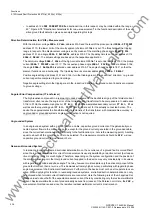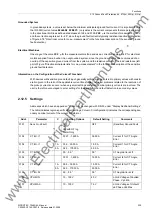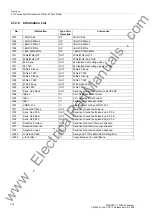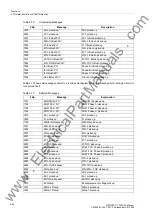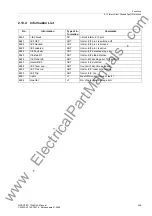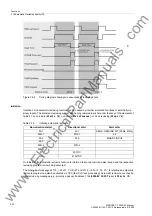
Functions
2.13 Intermittent Ground Fault Protection
SIPROTEC, 7SJ62/64, Manual
C53000-G1140-C207-2, Release date 01.2008
243
2.13
Intermittent Ground Fault Protection
A typical characteristic of intermittent ground faults is that they often disappear automatically to strike again
after some time. They can last between a few milliseconds and several seconds. This is why such faults are
not detected at all or not selectively by the ordinary time overcurrent protection. If pulse durations are extremely
short, not all protection devices in a short-circuit path may pick up; selective tripping is thus not ensured.
Due to the time delay of the overcurrent protection function such faults are too short to initiate shutdown of the
faulted cable. Only when they have become permanent such ground faults can be removed selectively by the
short-circuit protection.
But such intermittent ground faults already bear the risk of causing thermal damage to equipment. This is why
devices 7SJ62/64 feature a protective function that is able to detect such intermittent ground faults and accu-
mulates their duration. If the sum reaches a configurable value within a certain time, the limit of the thermal load
capacity has been reached. If the ground faults are distributed over a long period of time or if the ground fault
goes off and does not re-ignite after some time, the equipment under load is expected to cool down. Tripping
is not necessary in this case.
Applications
• Protection from intermittent ground faults which occur, e.g. in cables due to poor insulation or water ingress
in cable joints.
2.13.1
Description
Acquisition of Measured Quantities
The intermittent ground fault can either be detected via the ordinary ground current input (
I
N
), the sensitive
ground current input (
I
NS
), or it is calculated from the sum of the three phase currents (3
I
0). Unlike the over-
current protection which uses the fundamental wave, the intermittent ground fault protection creates the r.m.s.
value of this current and compares it to a settable threshold
Iie>
. This method accounts for higher order har-
monics contents (up to 400 Hz) and for the direct component since both factors contribute to the thermal load.
Pickup/Tripping
If the pickup threshold value
Iie>
is exceeded, the pickup message (
„IIE Fault det“
, see Figure 2-93) is
issued. The pickups are also counted; as soon as the counter content has reached the value of parameter
Nos.det.
, the message
„Intermitt.EF“
is issued. A stabilized pickup is obtained by prolonging the pickup
message
„IIE Fault det“
by a settable time
T-det.ext.
. This stabilization is especially important for the
coordination with existing static or electromechanical overcurrent relays.
The duration of the stabilized pickups
„IIE stab.Flt“
is summated with an integrator
T-sum det.
. If the
accumulated pickup time reaches a settable threshold value, a corresponding message is generated (
„IEF
Tsum exp.“
). Tripping takes place, however, only while a ground fault is present (message
„IEF Trip“
).
The trip command is maintained during the entire minimum tripping time specified for the device, even if the
ground fault is of short duration. After completion of the tripping command all memories are reset and the pro-
tection resumes normal condition.
www
. ElectricalPartManuals
. com










